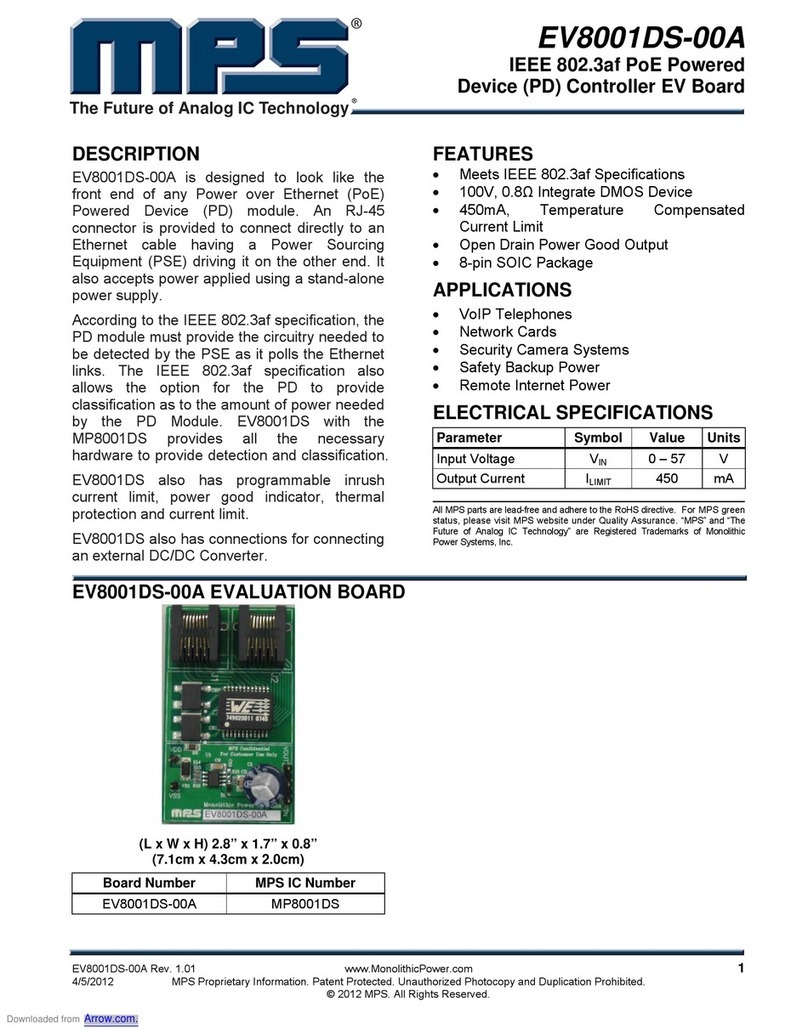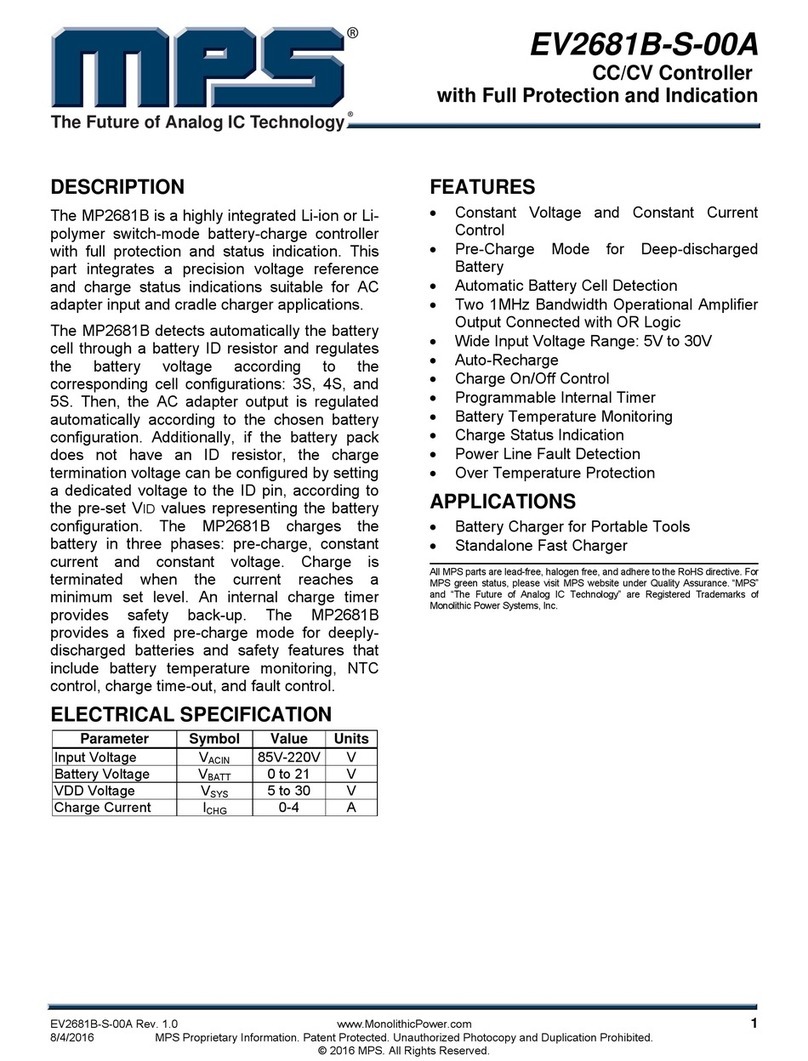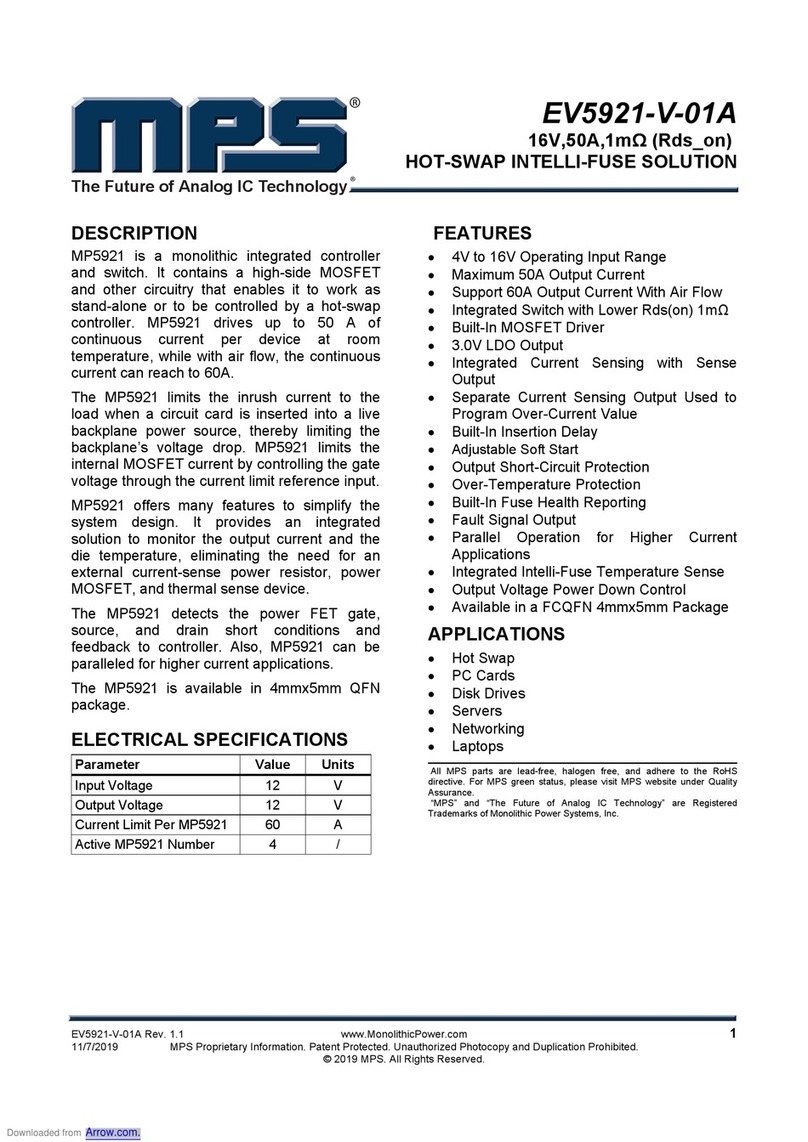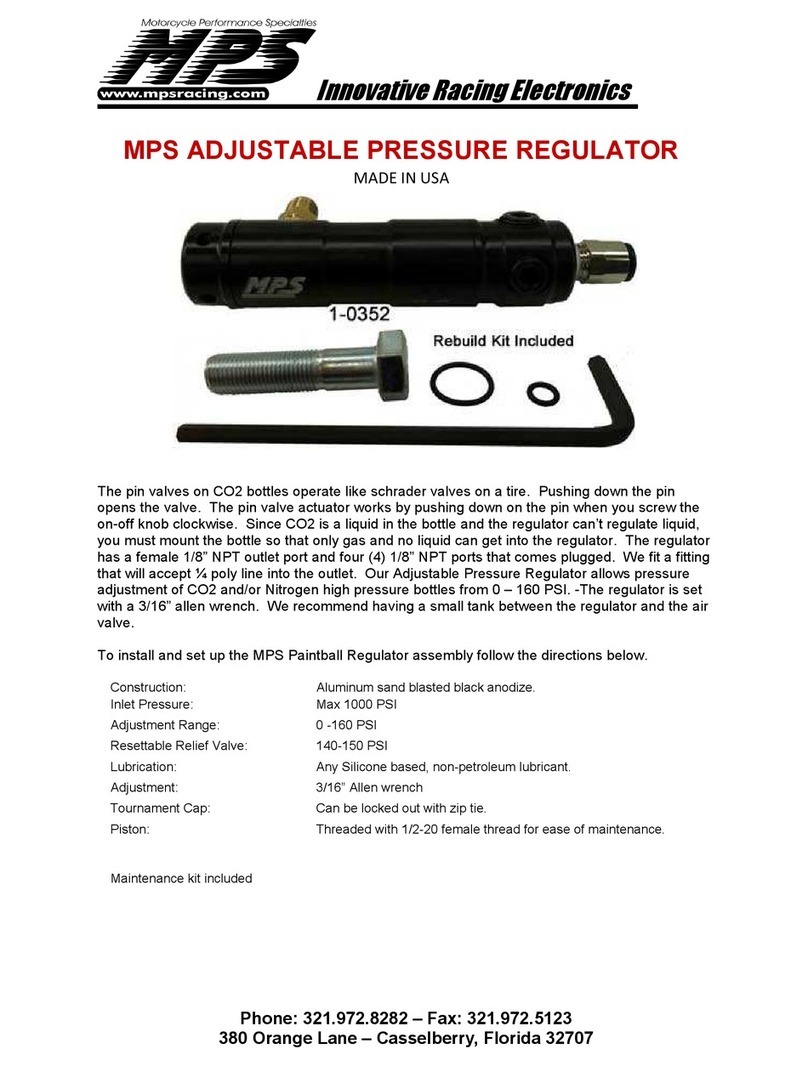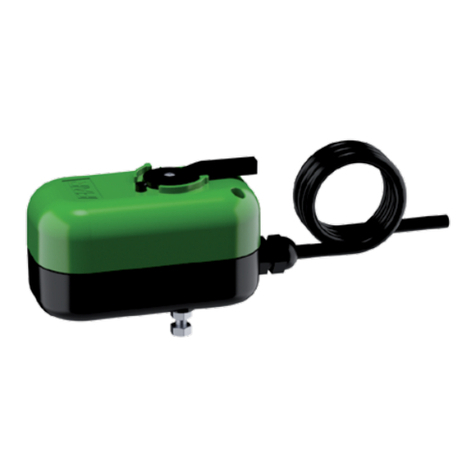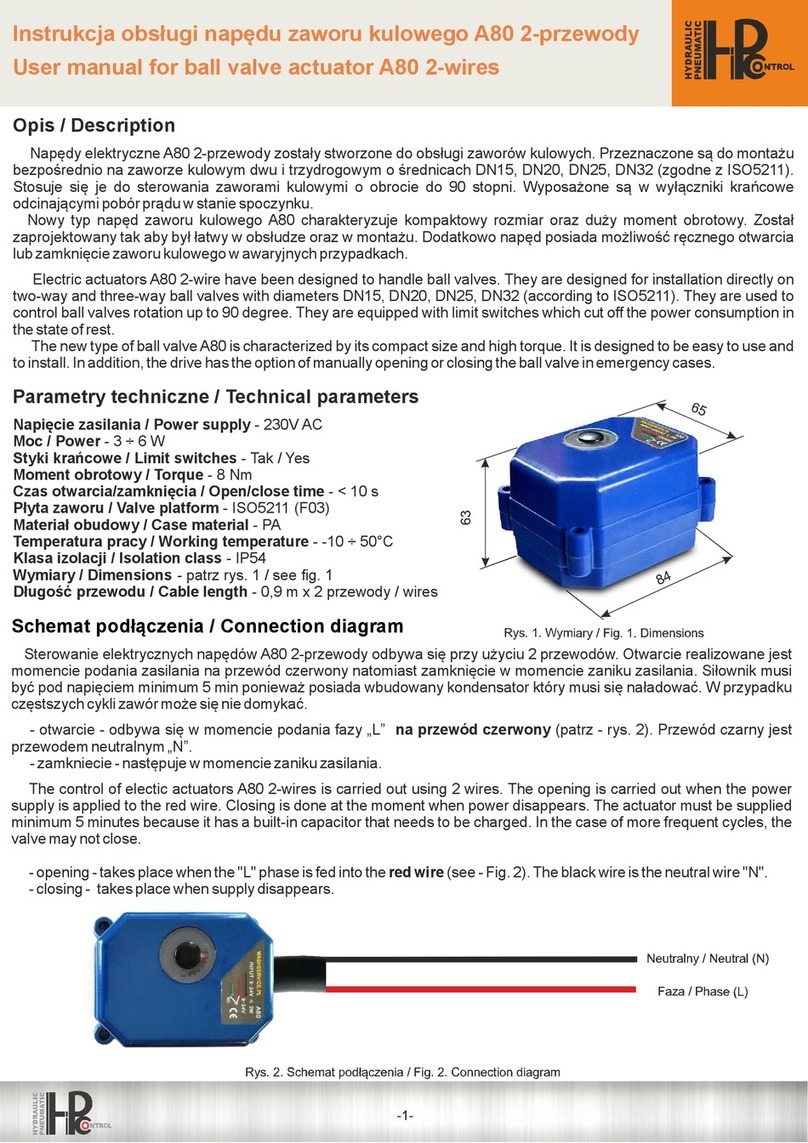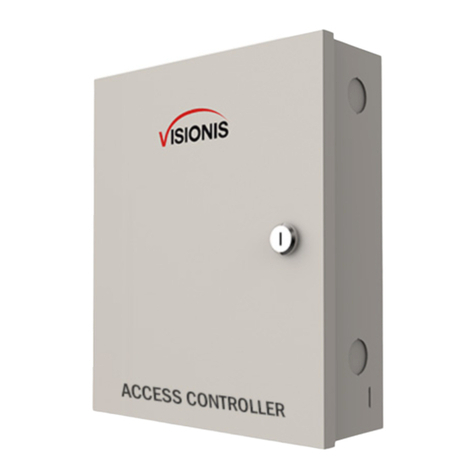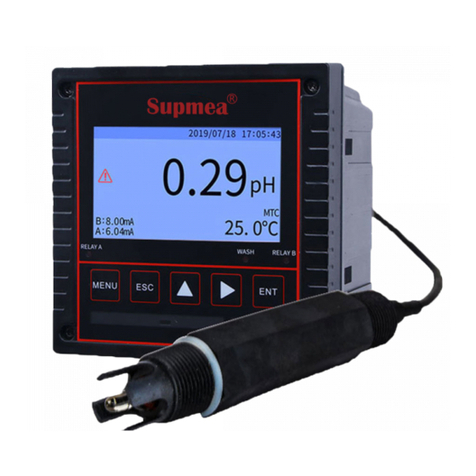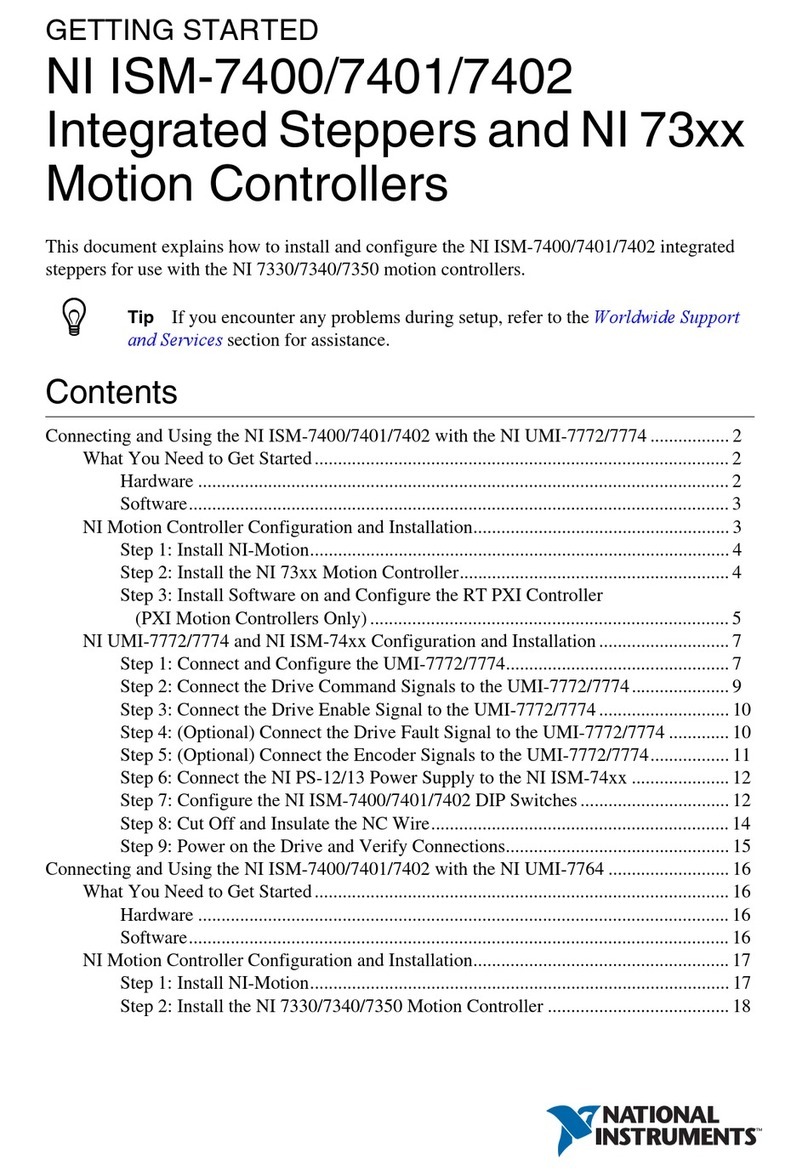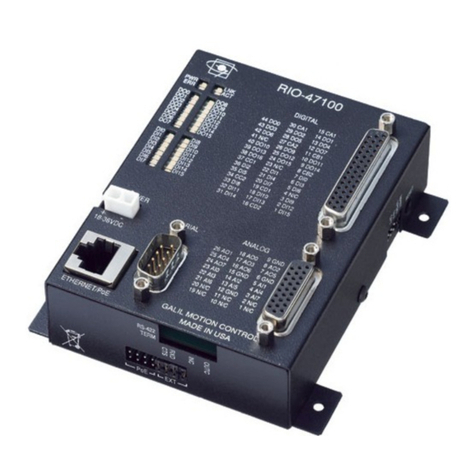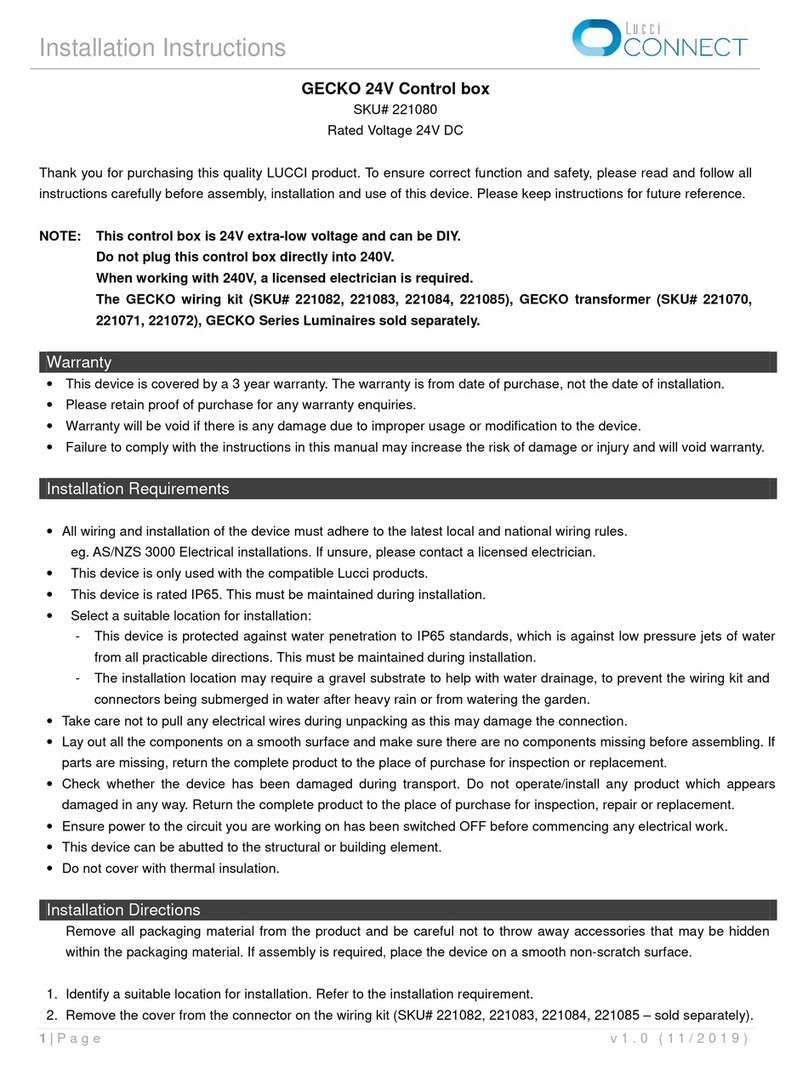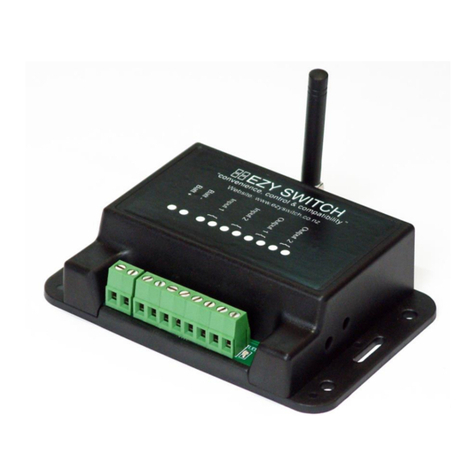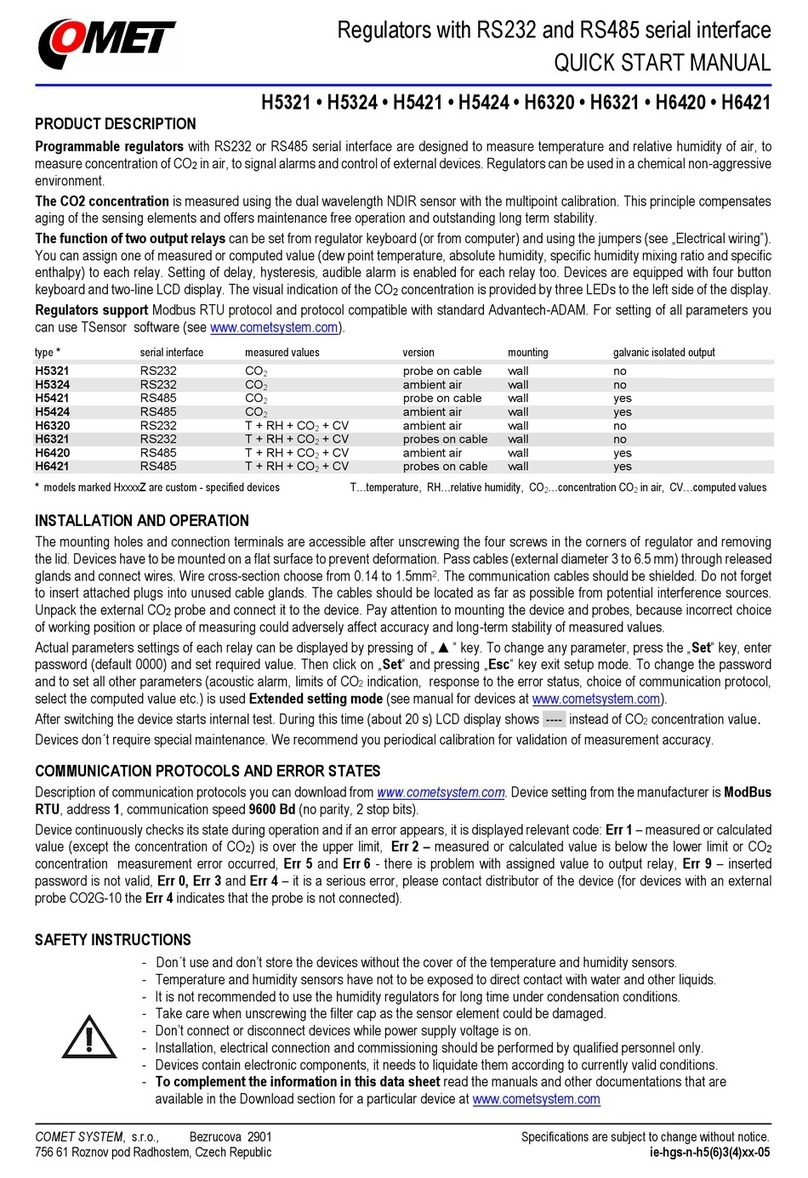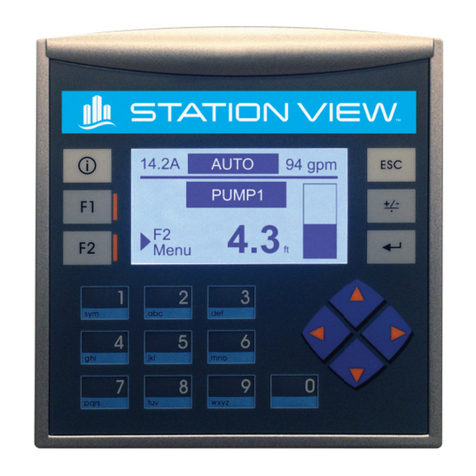MPS MP150 User manual

MP150
Offline Primary-Side Regulator
For Low Power Applications
MP150 Rev. 1.15 www.MonolithicPower.com 1
9/25/2018 MPS Proprietary Information. Patent Protected. Unauthorized Photocopy and Duplication Prohibited.
© 2018 MPS. All Rights Reserved.
The Future of Analog IC Technology
DESCRIPTION
MP150 is a primary-side regulator that provides
accurate constant voltage (CV) regulation
without the opto-coupler, and supports Buck,
Buck-boost, Boost and Flyback topologies. It
has an integrated 500V MOSFET that simplifies
the structure and reduces costs. These features
help to make it a competitive candidate for off-
line low power applications, such as home
appliances and standby power.
MP150 is a green-mode operation regulator.
Both the peak current and switching frequency
decrease as the load decreases to provide
excellent efficiency performance at light load,
thus improving the overall average efficiency.
The MP150 features various protections,
including thermal shutdown (TSD), VCC under-
voltage lockout (UVLO), over-load protection
(OLP), short-circuit protection (SCP), and open
loop protection.
MP150 is available in the TSOT23-5 and
SOIC8 packages.
FEATURES
Primary-side constant voltage (CV) control,
supporting Buck, Buck-boost, Boost and
Flyback topologies
Integrated 500V/30MOSFET
< 150mW No-load power consumption
Up to 2W output power
Maximum DCM output current less than
120mA
Maximum CCM output current less than
200mA
Frequency foldback
Maximum frequency limitation
Peak current compression
Internal high-voltage current source
APPLICATIONS
Home Appliance, White Goods and
Consumer Electronics
Industrial Controls
Standby Power
A
ll MPS parts are lead-free, halogen free, and adhere to the RoHS directive. Fo
r
MPS green status, please visit MPS website under Quality Assurance.
“MPS” and “The Future of Analog IC Technology” are Registered Trademarks
of Monolithic Power Systems, Inc.
TYPICAL APPLICATION

MP150 – OFFLINE PRIMARY-SIDE REGULATOR
MP150 Rev. 1.15 www.MonolithicPower.com 2
9/25/2018 MPS Proprietary Information. Patent Protected. Unauthorized Photocopy and Duplication Prohibited.
© 2018 MPS. All Rights Reserved.
ORDERING INFORMATION
Part Number* Package Top Marking
MP150GJ TSOT23-5 ADG
MP150GS SOIC8 MP150
* For Tape & Reel, add suffix –Z (e.g. MP150GJ–Z);
* For Tape & Reel, add suffix –Z (e.g. MP150GS–Z);
PACKAGE REFERENCE
TOP VIEW TOP VIEW
1
2
3
5
4SOURCE
SOURCE
VCC
FB
DRAIN
VCC
FB
SOURCE
SOURCE
N/C
DRAIN
N/C
N/C
1
2
3
4
8
7
6
5
TSOT23-5 SOIC8
ABSOLUTE MAXIMUM RATINGS (1)
Drain to SOURCE......................... -0.7V to 500V
All Other Pins ................................. -0.7V to 6.5V
Continuous Power Dissipation (TA= +25°C) (2)
TSOT23-5 ...................................................... 1W
SOIC8............................................................. 1W
Junction Temperature............................... 150°C
Lead Temperature .................................... 260°C
Storage Temperature................-60°C to +150°C
ESD Capability Human Body Mode .......... 4.0kV
ESD Capability Machine Mode...................200V
Recommended Operating Conditions (3)
Operating Junction Temp. (TJ) .-40°C to +125°C
Operating VCC range ..................... 5.3V to 5.6V
Thermal Resistance (4) θJA θJC
TSOT23-5 .............................. 100......55 ...°C/W
SOIC8...................................... 96.......45 ...°C/W
Notes:
1) Exceeding these ratings may damage the device.
2) The maximum allowable power dissipation is a function of the
maximum junction temperature TJ(MAX), the junction-to-
ambient thermal resistance JA, and the ambient temperature
TA. The maximum allowance continuous power dissipation at
any ambient temperature is calculated by
PD(MAX)=(TJ(MAX)-TA)/JA. Exceeding the maximum
allowance power dissipation will cause excessive die
temperature, and the regulator will go into thermal shutdown.
Internal thermal shutdown circuit protects the device from
permanent damage.
3) The device is not guaranteed to function outside of its
operating conditions.
4) Measured on JESD51-7, 4-layer PCB.

MP150 – OFFLINE PRIMARY-SIDE REGULATOR
MP150 Rev. 1.15 www.MonolithicPower.com 3
9/25/2018 MPS Proprietary Information. Patent Protected. Unauthorized Photocopy and Duplication Prohibited.
© 2018 MPS. All Rights Reserved.
ELECTRICAL CHARACTERISTICS
VCC = 5.8V, TA= 25°C, unless otherwise noted.
Parameter Symbol Condition Min Typ Max Units
Start-up Current Source (Drain Pin)
Internal regulator supply current Iregulator VCC=4V;VDrain=100V 2.5 3.5 4.5 mA
Drain pin leakage current ILeak VCC=5.8V;VDarin=400V 10 12 A
Breakdown voltage V(BR)DSS 500 V
Supply Voltage Management (VCC Pin)
VCC level (increasing) where the
internal regulator stops VCCOFF 5.4 5.6 5.8 V
VCC level (decreasing) where the
internal regulator turns on VCCON 5.1 5.3 5.6 V
VCC regulator on and off hysteresis 250 mV
VCC level (decreasing) where the IC
stops working VCCstop 3.4 V
VCC level (decreasing) where the
protection phase ends VCCpro 2.4 V
Internal IC consumption ICC VCC=5.8V, fs=37kHz,
D= 40% 430 A
Internal IC consumption (no
switching) ICC 300 A
Internal IC Consumption, Latch off
Phase ICCLATCH VCC=5.3V 16 A
Internal MOSFET (Drain Pin)
Breakdown voltage VBRDSS 500 V
ON resistance Ron 30
Internal Current Sense
Peak current limit ILimit 260 290 345 mA
Leading-edge blanking τLEB1 350 ns
SCP point ISCP 450 mA
Leading-edge blanking for SCP τLEB2 180 ns
Feedback input (FB Pin)
Minimum off time τminoff 15 18 21 s
Primary MOSFET feedback turn-on
threshold VFB 2.45 2.55 2.65 V
OLP feedback trigger threshold VFB_OLP 1.7 V
OLP delay time τOLP fs=37kHz 170 ms
Open-loop detection VOLD 60 mV
Thermal Shutdown
Thermal shutdown threshold 150 ºC

MP150 – OFFLINE PRIMARY-SIDE REGULATOR
MP150 Rev. 1.15 www.MonolithicPower.com 4
9/25/2018 MPS Proprietary Information. Patent Protected. Unauthorized Photocopy and Duplication Prohibited.
© 2018 MPS. All Rights Reserved.
TYPICAL CHARACTERISTICS
On-State Resistance vs.
Junction Temperature
Feedback Voltage vs.
Junction Temperature
Minimum Off Time vs.
Junction Temperature
V
BRDSS
(V)
Breakdown Voltage vs.
Junction Temperature
500
520
540
560
580
600
620
640
-40 -20 0 25 85 105 125 0
0.4
0.8
1.2
1.6
2
-40 -20 0 25 85 105 125 2
2.1
2.2
2.3
2.4
2.5
2.6
2.7
2.8
-40 -20 0 25 85 105 125
VFB(V)
10
11
12
13
14
15
16
17
18
19
20
-40 -20 0 25 85 105 125

MP150 – OFFLINE PRIMARY-SIDE REGULATOR
MP150 Rev. 1.15 www.MonolithicPower.com 5
9/25/2018 MPS Proprietary Information. Patent Protected. Unauthorized Photocopy and Duplication Prohibited.
© 2018 MPS. All Rights Reserved.
TYPICAL PERFORMANCE CHARACTERISTICS
VIN = 265VAC, VOUT = 5V, IOUT = 200mA, L = 1mH, COUT = 100μF, TA= +25°C, unless otherwise
noted.

MP150 – OFFLINE PRIMARY-SIDE REGULATOR
MP150 Rev. 1.15 www.MonolithicPower.com 6
9/25/2018 MPS Proprietary Information. Patent Protected. Unauthorized Photocopy and Duplication Prohibited.
© 2018 MPS. All Rights Reserved.
TYPICAL PERFORMANCE CHARACTERISTICS (continued)
VIN = 230VAC, VOUT = 5V, IOUT = 200mA, L = 1mH, COUT = 100μF, TA= +25°C, unless otherwise
noted.
Input Power Start Up Input Power Shut Down SCP Entry
SCP recovery Open Loop Entry Open Loop Recovery
Output Voltage Ripple Load Transient
V
RIPPLE
50mV/div.
V
RIPPLE
50mV/div.
I
OUT
200mA/div.
V
DS
100V/div.
I
L
200mA/div.
V
DS
100V/div.
I
L
200mA/div.
V
DS
100V/div.
I
L
200mA/div.
V
DS
100V/div.
I
L
200mA/div.
V
DS
100V/div.
I
L
200mA/div.
V
DS
100V/div.
I
L
200mA/div.

MP150 – OFFLINE PRIMARY-SIDE REGULATOR
MP150 Rev. 1.15 www.MonolithicPower.com 7
9/25/2018 MPS Proprietary Information. Patent Protected. Unauthorized Photocopy and Duplication Prohibited.
© 2018 MPS. All Rights Reserved.
PIN FUNCTIONS
Pin #
TSOT23-5
Pin #
SOIC8 Name Description
1 1 VCC Control Circuit Power Supply.
2 2 FB Regulator Feedback.
3,4 3,4 SOURCE Internal Power MOSFET Source. Ground reference for VCC and FB pins.
5 7 DRAIN Internal Power MOSFET Drain. High voltage current source input.
5,6,8 N/C Not connected.

MP150 – OFFLINE PRIMARY-SIDE REGULATOR
MP150 Rev. 1.15 www.MonolithicPower.com 8
9/25/2018 MPS Proprietary Information. Patent Protected. Unauthorized Photocopy and Duplication Prohibited.
© 2018 MPS. All Rights Reserved.
FUNCTIONAL BLOCK DIAGRAM
DrainVcc
FB
Source
Start up unit
Power
Managemen
t
Feedback control
Driving Signal
Management
Protection Unit
Peak current
Limitation
Figure 1: Functional Block Diagram

MP150 – OFFLINE PRIMARY-SIDE REGULATOR
MP150 Rev. 1.14 www.MonolithicPower.com 9
9/25/2018 MPS Proprietary Information. Patent Protected. Unauthorized Photocopy and Duplication Prohibited.
© 2018 MPS. All Rights Reserved.
OPERATION
The MP150 is a green-mode-operation regulator.
The peak current and the switching frequency
both decrease as the load decreases to provide
excellent efficiency at light load, and thus
improve the overall average efficiency. The
typical application diagram shows that the
regulator operates using a minimal number of
external components. It incorporates the
following features:
Start-up and Under Voltage Lock-out
The internal high-voltage regulator supplies the
IC from the Drain pin. The IC starts switching and
the internal high voltage regulator turns off when
the voltage on VCC reaches 5.6V. When the
VCC voltage drops below 5.3V, the internal high
voltage regulator turns on again to charge the
external VCC capacitor. Use a capacitor in the
several µF range stabilize the VCC voltage and
this can lower the cost by decreasing the value of
the capacitor.
When the voltage on VCC drops blow 3.4V, the
IC stops, then the internal high-voltage regulator
charges the VCC capacitor.
When faults occur, such as overload, short circuit,
and over-heating, the IC stops working and an
internal current source (16µA) discharges the VCC
capacitor. Before the VCC voltage drops below
2.4V, the internal high-voltage regulator remains off
and the VCC capacitor remains discharged.
Estimate the restart time after a fault as:
CC
restart VCC VCC
V2.4V 5.6V 2.4V
tC C
16uA 3.5mA
Figure 2 shows the typical waveform with VCC
under-voltage lockout.
VCCH=5.6V
VCCL=5.3V
VCC
Internal
Current
Source
Driving
Signal
ON
OFF
VCCStop=3.4V
Figure 2: VCC Under-Voltage Lockout
Constant Voltage Operation
The MP150 is a fully-integrated regulator when
used in a Buck solution as shown in the typical
application on page 1.
The integrated MOSFET turns ON at the
beginning of each cycle when the feedback
voltage is below the reference voltage (2.5V),
which indicates insufficient output voltage. The
peak current limit determines the ON period.
After the ON period elapses, the integrated
MOSFET turns OFF. The freewheeling diode (D1)
remains OFF until the inductor current charges
the sampling capacitor (C3) voltage to the output
voltage level. Then the sampling capacitor
voltage changes with the output voltage. The
sampling capacitor can sample and hold the
output voltage to regulate the output voltage. The
sampling capacitor voltage decreases after the
inductor current drops below the output current.
When the feedback voltage falls below the
reference voltage (2.5V), a new switching cycle
begins.
Figure 3 shows the detailed operation timing
diagram under CCM.

MP150 – OFFLINE PRIMARY-SIDE REGULATOR
MP150 Rev. 1.14 www.MonolithicPower.com 10
9/25/2018 MPS Proprietary Information. Patent Protected. Unauthorized Photocopy and Duplication Prohibited.
© 2018 MPS. All Rights Reserved.
Figure 3: VFB vs VOUT
Monitoring the sampling capacitor regulates the
output voltage, as per the following equation:
R1 R2
Vo 2.5V R2
Frequency Foldback
Under light load or no load conditions, the output
drops very slowly, which increases the time for
the MOSFET to turn ON again; i.e., frequency
decreases as the load decreases. So the MP150
can maintain a high efficiency under light load
condition by reducing the switching frequency
automatically.
The switching frequency can be obtained as:
in o o
s
peak o in
(V V ) V
f2L(I I ) V
, for CCM
in O o o
s2
peak in
2(V V ) I V
fLI V , for DCM
At the same time, the peak current limit
decreases from 290mA as the OFF time
increases. In standby mode, the frequency and
the peak current are both minimized, allowing for
a small dummy load. As a result, the peak-
current-compression function helps to reduce no-
load consumption. Determine the peak current
limitation from the following equation where τoff is
the power module OFF time:
Peak off
I 290mA (1mA / s) ( 18 s)
Minimum OFF Time Limit
The MP150 implements a minimum OFF time
limit. During the normal operation, the minimum
OFF time limit is 18µs; during start up, the
minimum OFF time limit gradually drops from
72µs, to 36µs, then to 18 µs (see Figure 4). Each
minimum OFF time has 128 switching cycles.
This soft-start function allows for safe start-up.
72us
36us
18us
Figure 4: tminoff at Start-Up
EA Compensation
-
+
VFB
-
+Vref
2.5V
EA
+
+
-
+
FB
Comparator
Vramp
Vramp
Ipeak
Figure 5: EA and Ramp Compensation
To improve load regulation, the MP150
implements an error amplifier (EA) compensation
function (Figure 5). The MP150 samples the
feedback voltage 6µs after the MOSFET turns off.
EA compensation regulates the 2.5V reference
voltage with the load, thus improving the power
module regulation.
RAMP Compensation
An internal ramp compensation circuit precisely
maintains the output voltage. An additional
exponential voltage sinking source pulls down
the feedback comparator’s reference voltage as
shown in Figure 5. The ramp compensation is
relative to the load conditions: Under full-load
conditions, the compensation is ~1mV/µs; With a

MP150 – OFFLINE PRIMARY-SIDE REGULATOR
MP150 Rev. 1.14 www.MonolithicPower.com 11
9/25/2018 MPS Proprietary Information. Patent Protected. Unauthorized Photocopy and Duplication Prohibited.
© 2018 MPS. All Rights Reserved.
decreasing load, the compensation increases
exponentially.
Over Load Protection (OLP)
As the load increases, the peak current and the
switching frequency increase with the load. When
the switching frequency and peak current
reaches their maximums, the output voltage will
decrease if the load continues to increase. Then
the FB voltage will drop below OLP threshold.
By continuously monitoring the FB voltage, the
timer starts when the FB voltage drops below the
1.7V error flag threshold. Removing the error flag
resets the timer. If the timer continues to
completion at 170ms (fa=37kHz), OLP occurs.
This timer duration avoids triggering OLP when
the power supply starts up or enters a load
transition phase, and therefore requires that the
power supply start up in less than 170ms. A
different switching frequency (fs) changes the
over-load protection delay time, as shown below:
Delay
37kHz
170ms fs
Short-Circuit Protection (SCP)
The MP150 shuts down when the peak current
rises above 450mA as its short-circuit protection
threshold. The power supply resumes operation
after removing the fault.
Thermal shutdown (TSD)
To prevent from any lethal thermal damage, the
MP150 shuts down switching when the inner
temperature exceeds 150°C. During thermal
shutdown (TSD), the VCC drops to 2.4V, and
then the internal high voltage regulator recharges
VCC.
Open Loop Detection
If the VFB drops below 60mV, the IC will stop
working and begins a re-start cycle. The open-
loop detection is blanked for 128 switching cycles
during start-up.
Leading-Edge Blanking
An internal leading-edge blanking (LEB) unit
between the current sense resistor inside the IC
and the current comparator input avoids
prematurely switching pulse termination due to
the parasitic capacitance. During the blanking
period, the current comparator is disabled and
cannot turn off the external MOSFET. Figure 6
shows leading edge blanking.
Figure 6: Leading-Edge Blanking

MP150 – OFFLINE PRIMARY-SIDE REGULATOR
MP150 Rev. 1.15 www.MonolithicPower.com 12
9/25/2018 MPS Proprietary Information. Patent Protected. Unauthorized Photocopy and Duplication Prohibited.
© 2018 MPS. All Rights Reserved.
APPLICATION INFORMATION
Table 1. Common Topologies Using MP150
Topology Circuit Schematic Features
High-Side
Buck
1. No-isolation,
2. Positive output
3. Low cost
4. Direct feedback
High-Side
Buck-Boost
1. No-isolation,
2. Negative output
3. Low cost
4. Direct feedback
Boost
1. No-isolation,
2. Positive output
3. Low cost
4. Direct feedback
Flyback
1. Isolation,
2. Positive output
3. Low cost
4. Indirect feedback

MP150 – OFFLINE PRIMARY-SIDE REGULATOR
MP150 Rev. 1.15 www.MonolithicPower.com 13
9/25/2018 MPS Proprietary Information. Patent Protected. Unauthorized Photocopy and Duplication Prohibited.
© 2018 MPS. All Rights Reserved.
Topology Options
MP150 can be used in common topologies, such
as Buck, Buck-Boost, Boost and Flyback. Please
find the Table.1 for more information.
Component Selection
Input Capacitor
The input capacitor supplies the converter’s DC
input voltage. Figure 7 shows the typical half-
wave rectifier’s DC bus voltage waveform.
Figure 7: Input Voltage Waveform
When using the half-wave rectifier, set the input
capacitor 3µF/W for the universal input condition.
When using the full-wave rectifier, choose a
smaller capacitor, but avoid a minimum DC
voltage below 70V to avoid thermal shutdown.
Inductor
MP150 has a minimum OFF time limit that
determines the maximum power output. The
maximum power increases with the inductor
value. Using a smaller inductor may cause the
output to fail at full load, but a larger inductor
results in a higher OLP load. The optimal
inductor value is the smallest that can supply the
rated power. The maximum power is:
ominoff
omax o peak
V
PV(I )
2L , for CCM
2
omax peak
minoff
11
PLI
2, for DCM
To account for converter parameters—such as
peak current limit and minimum OFF time—
estimate the minimum inductor power (Pmin) for
the maximum power, and selecting an inductor
with a Pmin value that exceeds the rated power.
Using output voltages 5V and 12V as examples,
Figure 8 shows the curve for Pmin at 5V, and
Figure 9 shows the curve for Pmin at 12V.
(Ipeak=0.29A, τminoff=18µs).
MAXIMUM OUTPUT POWER(W)
INDUCTOR(mH)
0.6
0.7
0.8
0.9
1
1.1
1.2
0.6 1.1 1.6 2.1 2.6
P
MIN
Figure 8: Pmin vs. L at 5V
MAXIMUM OUTPUT POWER(W)
INDUCTOR(mH)
0.6 1.1 1.6 2.1 2.6
0
0.5
1
1.5
2
2.5
3
PMIN
Figure 9: Pmin vs. L at 12V
When designing a 0.5W converter (5V, 0.1A),
estimate the minimum inductor value at 0.6mH
based on Figure 8. Similarly, for a 1.2W
converter (12V, 0.1A), estimate the minimum
inductor at 0.9mH based on Figure 9.
Use a standard off-the-shelf inductor to reduce
costs. Use a standard inductance that exceeds
calculated inductance.
Freewheeling Diode
Choose a diode with a maximum reverse voltage
rating that exceeds the maximum input voltage,
and a current rating that exceeds the output
current.
The reverse recovery of the freewheeling diode
can affect the efficiency and circuit operation.
Select an ultra-fast diode, such as the EGC10JH
for DCM and the UGC10JH for CCM.

MP150 – OFFLINE PRIMARY-SIDE REGULATOR
MP150 Rev. 1.15 www.MonolithicPower.com 14
9/25/2018 MPS Proprietary Information. Patent Protected. Unauthorized Photocopy and Duplication Prohibited.
© 2018 MPS. All Rights Reserved.
Output Capacitor
The output capacitor maintains the DC output
voltage. Estimate the output voltage ripple as:
CCM _ ripple ESR
so
i
ViR
8f C
for CCM
2
pk o
o
DCM _ ripple pk ESR
so pk
II
I
VIR
fC I
for DCM
Use ceramic, tantalum, or low-ESR electrolytic
capacitors to lower the output voltage ripple.
Feedback Resistors
The resistor divider determines the output
voltage. Choose appropriate R1 and R2 values to
maintain the FB voltage at 2.5V. Avoid very large
values for R2 (typical values between 5k
to10k.
Feedback Capacitor
The feedback capacitor provides a sample-and-
hold function. Small capacitors result in poor
regulation at light load condition, and large
capacitors can impact circuit operation. Estimate
the capacitor range as per the following equation:
oo oo
FB
12o 12o
VC VC
1C
2R R I R R I
Choose an appropriate value given practical
considerations.
Dummy Load
A dummy load maintains the load regulation. This
ensures sufficient inductor energy to charge the
sample-and-hold capacitor to detect the output
voltage. Start with a 3mA dummy load and adjust
as necessary.
Surge Performance
To obtain a good surge performance, select an
appropriate input capacitor that meets different
surge tests. Figure 10 shows the half-wave
rectifier. Table 2 shows the required capacitance
under normal conditions for different surge
voltages.
Figure 10: Half-Wave Rectifier
Table 2: Recommended Capacitor Values
Surge
voltage 500V 1000V 2000V
C1 1F 10F 22F
C2 1F 4.7F 10F

MP150 – OFFLINE PRIMARY-SIDE REGULATOR
MP150 Rev. 1.15 www.MonolithicPower.com 15
9/25/2018 MPS Proprietary Information. Patent Protected. Unauthorized Photocopy and Duplication Prohibited.
© 2018 MPS. All Rights Reserved.
Layout Guide
PCB layout is very important to achieve reliable
operation, good EMI, and good thermal
performance. Follow these guidelines to optimize
performance.
1) Minimize the loop area formed by the input
capacitor, IC part, freewheeling diode,
inductor and output capacitor.
2) Place the power inductor far away from the
input filter.
3) Add a capacitor in the several-hundred pF
range between the FB and source pins, as
close as to the IC as possible.
4) Connect the exposed pad with the Drain pin
to a large copper area to improve thermal
performance.
Top
Bottom Layer
Design Example
Below is a design example following the
application guidelines given the following
specifications:
Table 3: Design Example
VIN 85 to 265Vac
VOUT 5V
IOUT 200mA
Figure 12 shows the detailed application
schematic. The Typical Performance
Characteristics section lists typical performance
and circuit waveforms. For more device
applications, refer to the related Evaluation Board
Datasheets.

MP150 – OFFLINE PRIMARY-SIDE REGULATOR
MP150 Rev. 1.15 www.MonolithicPower.com 16
9/25/2018 MPS Proprietary Information. Patent Protected. Unauthorized Photocopy and Duplication Prohibited.
© 2018 MPS. All Rights Reserved.
TYPICAL APPLICATION CIRCUITS
Figure 11 shows a typical application example of a 5V, 200mA non-isolated power supply using MP150.
L
N
D2
1N4007
WUGC10JH
D3
GND
Vout
GND
1N4007
D1
10
RF1
Drain
5
Source
4
Vcc 1
FB 2
Source 3
U1
MP150
470 pF
C7
C2
1
C6
/400V
C3
/400V
C4
100 /6.3V
C5
1mH
L1
4.99k
R1
4.99k
R2
680
R3
D4
1N4007
220nF
C1
1mH
L2 5V/200mA
Figure 11: Typical Application Example; 5V, 200mA

MP150 – OFFLINE PRIMARY-SIDE REGULATOR
MP150 Rev. 1.15 www.MonolithicPower.com 17
9/25/2018 MPS Proprietary Information. Patent Protected. Unauthorized Photocopy and Duplication Prohibited.
© 2018 MPS. All Rights Reserved.
FLOW CHART
Start
Vcc>5.6V
Internal High Voltage
Regulator ON
YN
Soft Start
Monitor VFB
Monitor Vcc
OLP=Logic High
Y
OTP, SCP
and open loop
Monitor
Y
Vcc Decrease
to 2.4
Shut Down
Internal High Voltage
Regulator
N
Continuous
Fault Monitor
Vcc<5.3V
Y
N
OTP, SCP
or open loop
Logic High?
Y
N
UVLO, OTP, SCP, OLP and Open Loop
Protection are auto restar
Shut off the
Switching
Pulse
Y
N
Y
VFB<2.5V VFB<1.7V
Turn ON the
MOSFET
Y
N6144
switching
counter
finished?
Vcc<3.4V
Y
Y
N
Figure 12: Control Flow Chart

MP150 – OFFLINE PRIMARY-SIDE REGULATOR
MP150 Rev. 1.15 www.MonolithicPower.com 18
9/25/2018 MPS Proprietary Information. Patent Protected. Unauthorized Photocopy and Duplication Prohibited.
© 2018 MPS. All Rights Reserved.
Figure 13: Signal Evolution Resulting from Faults

MP150 – OFFLINE PRIMARY-SIDE REGULATOR
MP150 Rev. 1.15 www.MonolithicPower.com 19
9/25/2018 MPS Proprietary Information. Patent Protected. Unauthorized Photocopy and Duplication Prohibited.
© 2018 MPS. All Rights Reserved.
PACKAGE INFORMATION
TSOT23-5

MP150 – OFFLINE PRIMARY-SIDE REGULATOR
NOTICE: The information in this document is subject to change without notice. Please contact MPS for current specifications.
Users should warrant and guarantee that third party Intellectual Property rights are not infringed upon when integrating MPS
products into any application. MPS will not assume any legal responsibility for any said applications.
MP150 Rev. 1.15 www.MonolithicPower.com 20
9/25/2018 MPS Proprietary Information. Patent Protected. Unauthorized Photocopy and Duplication Prohibited.
© 2018 MPS. All Rights Reserved.
PACKAGE INFORMATION
SOIC8
0.016(0.41)
0.050(1.27)
0o-8o
DETAIL "A"
0.010(0.25)
0.020(0.50) x 45o
SEE DETAIL "A"
0.0075(0.19)
0.0098(0.25)
0.150(3.80)
0.157(4.00)
PIN 1 ID
0.050(1.27)
BSC
0.013(0.33)
0.020(0.51)
SEATING PLANE
0.004(0.10)
0.010(0.25)
0.189(4.80)
0.197(5.00)
0.053(1.35)
0.069(1.75)
TOP VIEW
FRONT VIEW
0.228(5.80)
0.244(6.20)
SIDE VIEW
14
85
RECOMMENDED LAND PATTERN
0.213(5.40)
0.063(1.60)
0.050(1.27)
0.024(0.61)
NOTE:
1) CONTROL DIMENSION IS IN INCHES. DIMENSION IN
BRACKET IS IN MILLIMETERS.
2) PACKAGE LENGTH DOES NOT INCLUDE MOLD FLASH,
PROTRUSIONS OR GATE BURRS.
3) PACKAGE WIDTH DOES NOT INCLUDE INTERLEAD FLASH
OR PROTRUSIONS.
4) LEAD COPLANARITY (BOTTOM OF LEADS AFTER FORMING)
SHALL BE 0.004" INCHES MAX.
5) DRAWING CONFORMS TO JEDEC MS-012, VARIATION AA.
6) DRAWING IS NOT TO SCALE.
0.010(0.25) BSC
GAUGE PLANE
This manual suits for next models
2
Table of contents
Other MPS Controllers manuals
Popular Controllers manuals by other brands
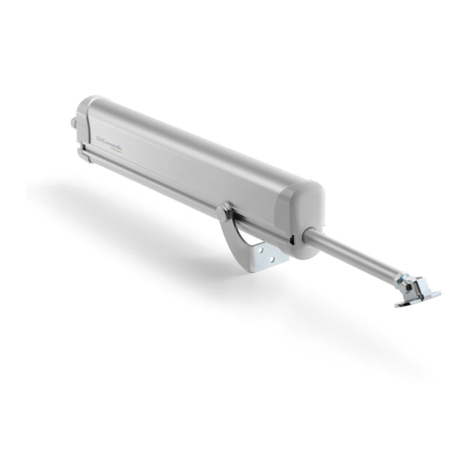
Comunello
Comunello RAYWIN instruction manual
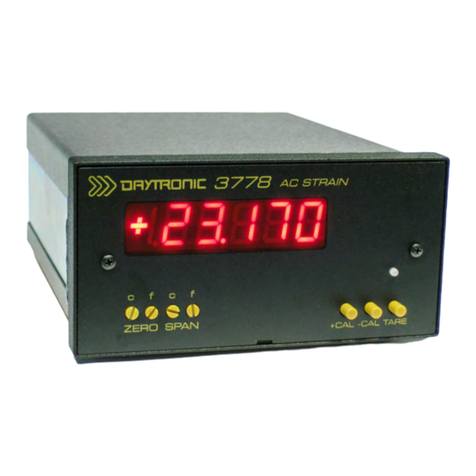
DayTronic
DayTronic 3700 Series instruction manual

Dixon
Dixon OM Series Operation manual
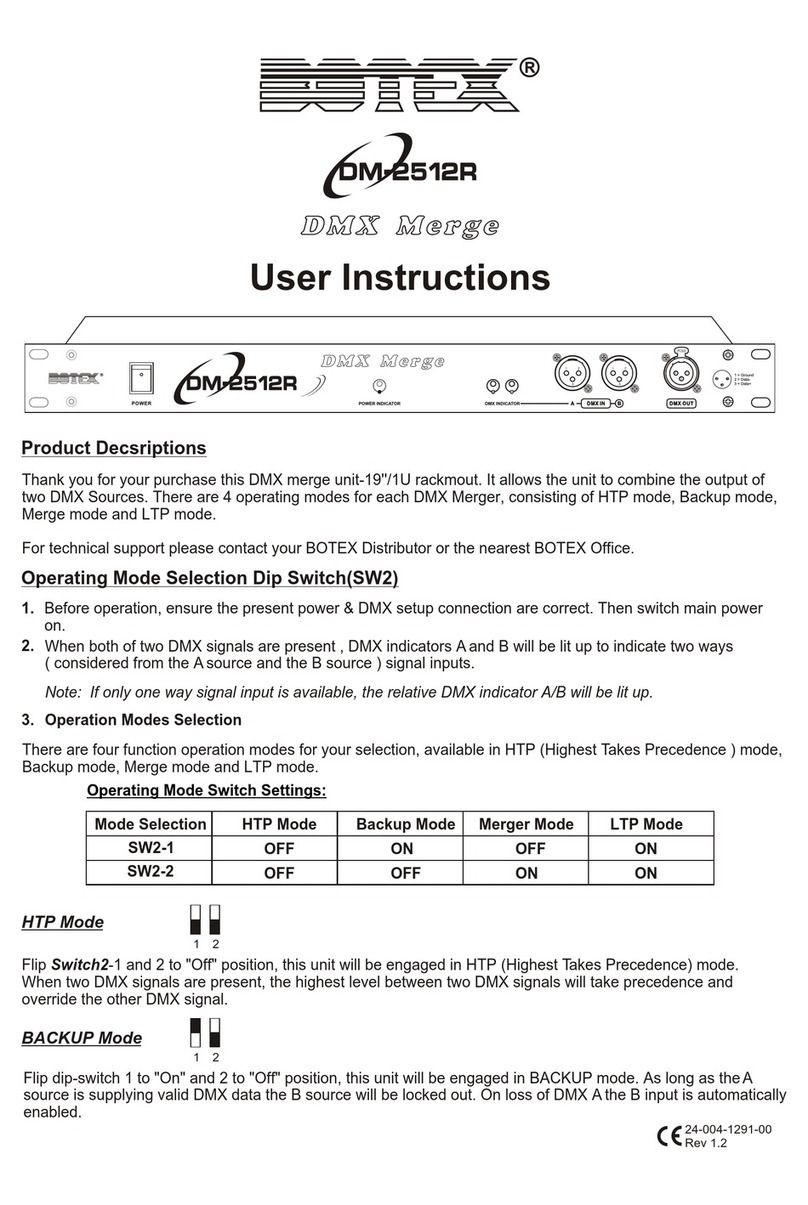
Botex
Botex DMX Merger DM-2512R User instructions

Mitsubishi Electric
Mitsubishi Electric CR800 Series instruction manual
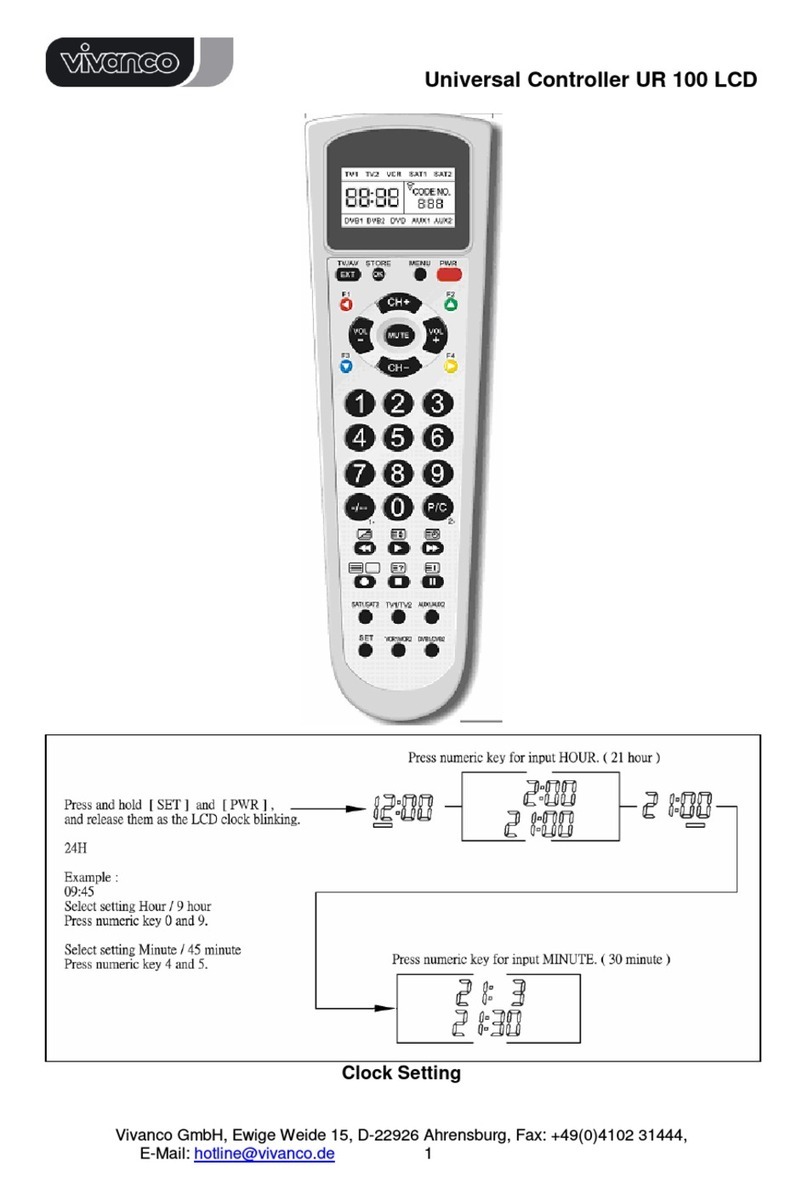
Vivanco
Vivanco 10 IN 1 UNIVERSAL LCD REMOTE CONTROL manual
